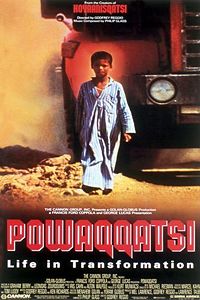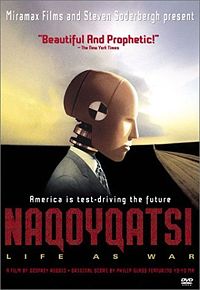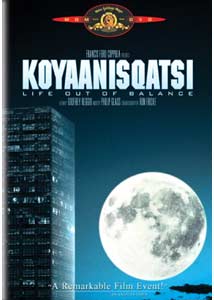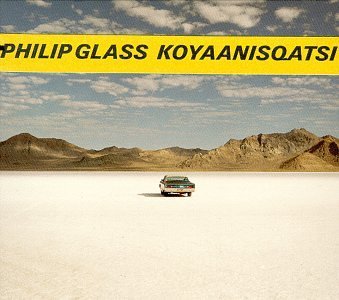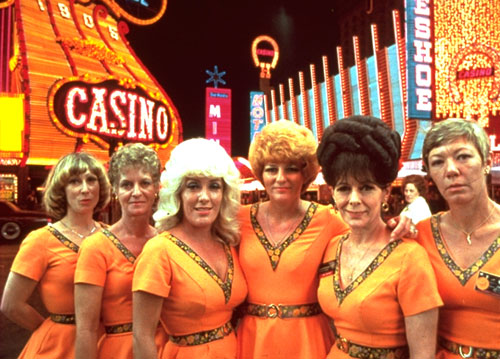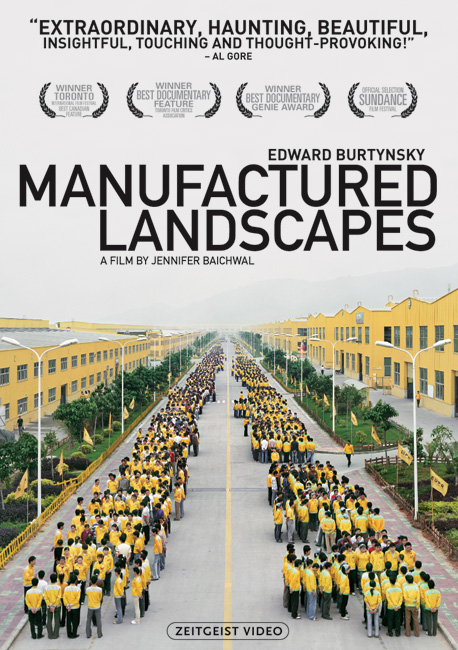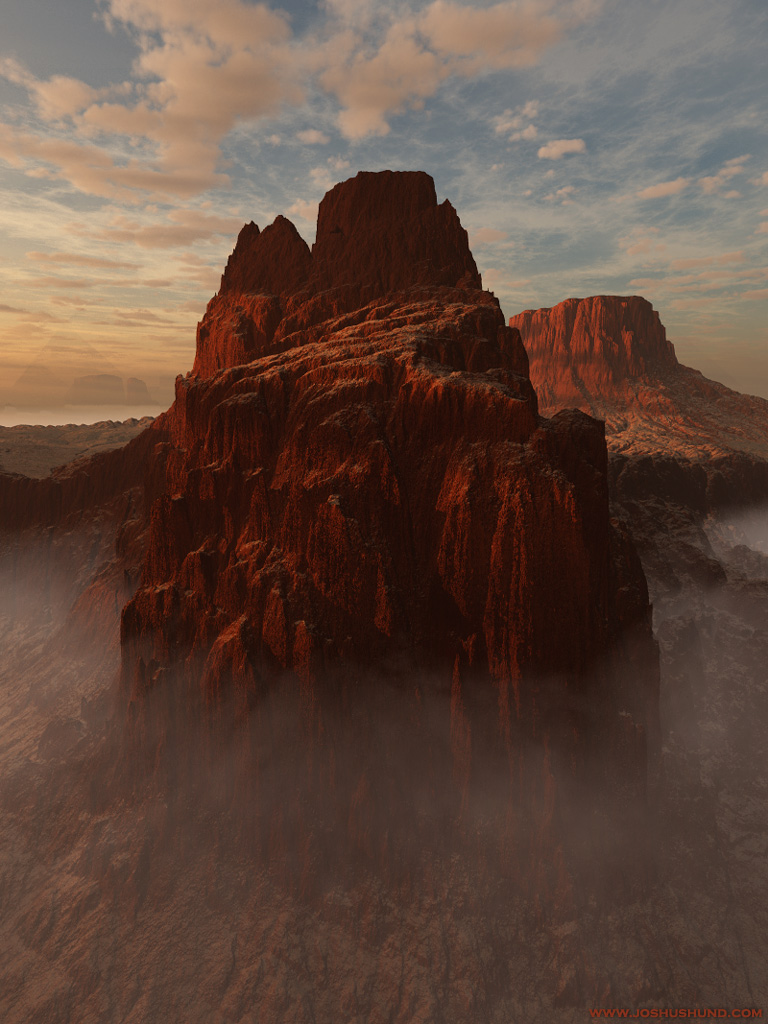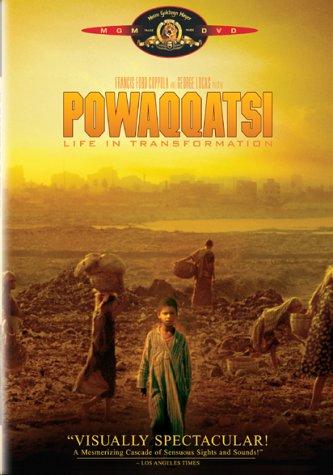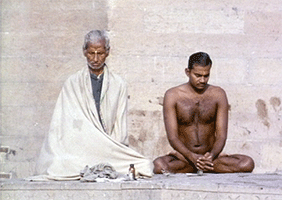 | Qatsi Trilogy |
|
2008, http://en.wikipedia.org/wiki/Powaqqatsi |
http://en.wikipedia.org/wiki/Naqoyqatsi |
1982 |
|
|
|
KOYAANISQATSI |
|
|
KOYAANISQATSI |
|
|
Screenshot from Naqoyqatsi, 2002 |
Cult Director Godfrey Reggio |
|
Amazing photos - Godfrey Reggio is a pioneer of a film style that creates poetic images
Born in New Orleans in 1940 and raised in southwest Louisiana, Reggio entered the Christian Brothers, a Roman Catholic pontifical order, at age 14. He spent 14 years of his adolescence and early adulthood in fasting, silence, and prayer. Based in New Mexico during the 1960s, Reggio taught grade school, secondary school, and college. In 1963, he co-founded Young Citizens for Action, a community organization project that aided juvenile street gangs. Following this, Reggio co-founded La Clinica de la Gente, a facility that provided medical care to 12,000 community members in Santa Fe, and La Gente, a community-organizing project in Northern New Mexico''s barrios. In 1972, he co-founded the Institute for Regional Education in Santa Fe, a non-profit foundation focused on media development, the arts, community organization, and research. In 1974 and 1975, with funding from the American Civil Liberties Union, Reggio co-organized a multi-media public interest campaign on the invasion of privacy and the use of technology to control behavior.
KOYAANISQATSI
- director Godfred Reggio. He explores our perceptions of the world in this enormous influential film that takes its title from the Hopi word meaning "life out of balance". Conflicts between technology and the environment are examined accompanied by Philip Glass'' haunting score. Perfect music recorded on Island records.
The film consists primarily of slow motion and time-lapse photography of cities and many natural landscapes across the United States. The visual tone poem contains neither dialogue nor a vocalized narration: its tone is set by the juxtaposition of images and music. In the Hopi language, the word Koyaanisqatsi means ''crazy life, life in turmoil, life out of balance, life disintegrating, a state of life that calls for another way of living'', and the film implies that modern humanity is living in such a way.
The first image in the film is of a Fremont Indian pictogram located in The Great Gallery of Horseshoe Canyon, part of Canyonlands National Park, Utah. The section shown depicts several tall darkly-shadowed figures standing near a taller figure adorned with a crown. The next image is a close-up of the Saturn V rocket from the Apollo 12 mission during lift off. The film fades into a shot of a desolate desert landscape. The large skylight arch depicted a few scenes later is a formation called Paul Bunyan''s Potty in the Needles District of Canyonlands. From there, it progresses to footage of various natural environmental phenomena such as waves and cloud formations ("Organic").
The film''s introduction to human involvement in the environment is subtle: a low aerial shot of choppy water cuts to a similar shot of rows of cultivated flowers. After aerial views of monumental rock formations partly drowned by the backed up waters of Lake Powell, we see a large mining truck causing billows of black dust in the chapter titled "Resource". This is followed by shots of power lines in the desert. Man''s continued involvement in the environment is depicted through images of mining operations, overhead shots of power plants, Glen Canyon Dam (not Hoover Dam as the Glen Canyon Bridge is visible) and stock footage of atomic bomb detonations in the Nevada desert.
The sequence entitled "Vessels" contains the film''s longest single take: a three minute and thirty-two second long shot of two United Airlines commercial passenger Boeing 747s taxiing on a runway. "Vessels" also contains shots of traffic patterns during rush hour on a Los Angeles freeway and a shot of a large parking lot. This is followed with stock footage of Soviet tanks lined up in rows and a B-1 Lancer military aircraft.
The juxtaposition of humans and nature is seen again in the chapter "Cloudscape". The time-lapse photography of shadows of clouds are seen moving across the skyscrapers in New York City.
POWAGGATSI: Life in Transformation is the 1988 sequel to the experimental 1982 documentary film Koyaanisqatsi.Film is a study of developing nations and the effect that Westernization has had upon them. Reggio explores the disappearance of ancient cultures and customs that occurs under modernization from the Western world.
In the beginning chapter, "Serra Pelada", men from Serra Pelada (a gold mine in Brazil) are seen carrying bags of dirt up to a destination. In the middle of the chapter, various shots outside of Serra Pelada are shown. Near the end of the chapter, a few men are carrying another man who was struck by a falling rock (mentioned in the "Impact of progress" feature on the DVD) uphill along a procession of workers who are carrying dirt filled sacks. After that, several discordant layered exposures of the dirt carriers are shown. The scene cross fades to show the image of a head, with multiple exposures of the same head rapidly rotating and layered upon to give a manifold appearance. This is an apparent allusion to Janus, the god of beginnings, endings and transitions, keeping with the film''s central themes of progress and change. After that, the film''s title is shown in red.
Mosque and Temple shows various natural shots as well as religious scenes. Some of these scenes are a transparent inside a church with someone walking by, a black man praying, a monk sitting while a bird flies off his stick, the same monk walking by the river, a bird flying by a sunset, more kids (similar to the final scene in "That Place"), crows flying above a river, two men rowing their boat in that river, a woman praying in the Ganges River, two men doing Yoga, another monk, and a temple in Nepal.
NAGOYGATSI
Naqoyqatsi: Life as war is a documentary film released in 2002; it is the third and final film of the Qatsi trilogy by Godfrey Reggio. The film focuses on society''s transition from a natural environment to a technology-based industrial environment.
Film focuses on the transition from nature to technology via the idea of "war as a way of life"/It is the epic battle between the natural world and the technological one.
In the opening chapter, the first scene is a zoom in of the Tower of Babel as portrayed in the Bible, then, shots of Michigan Central Station from both interior and exterior are shown, followed by a black and white series of shots. One shot is one of a strong wave, followed by a mountain with an effect behind the mountains of stars falling like comets, then a natural scene, then a black and white animation of a mountain''s framework growing is shown, after that, inverted, black and white, layered people are seen walking. Many lines come above the scene, and then the title is revealed in big, red writing.
Video Clips:
Art http://www.youtube.com/watch?v=T4wFo93MQVM&feature=related
Signns - http://www.youtube.com/watch?v=Q82cbK_dMh0&feature=related
http://www.youtube.com/watch?v=7rK4cr-iFbw&feature=related
New World - http://www.youtube.com/watch?v=PalrLLffceI&feature=related
Watch Koyaanisqatsi right now
Wiki about Koyaanisqatsi, Naqoyqatsi, Powaqqatsi and all locations in folms
Trilogy Photogallery
Powaqqatsi (trailer)
Naqoyqatsi
